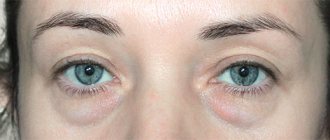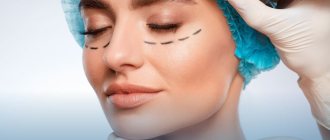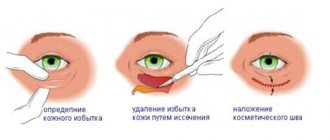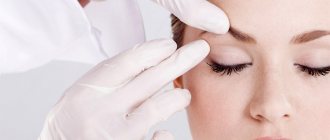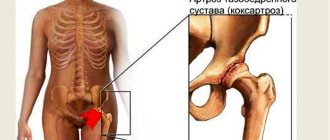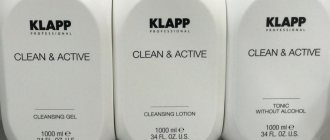Non-surgical blepharoplasty
Dark circles, wrinkles or drooping eyelids are classic signs that time and age have left a tired look on our face. Some people may have severe dark circles or excess skin on their eyelids that make their eyes appear dull due to congenital reasons or personal predisposition even at a young age.
Many patients seek a solution through blepharoplasty to remove excess skin from the upper eyelids, eliminate fat accumulation, and improve the appearance of under-eye bags. However, many people choose to avoid invasive surgery. And it is for this reason that thanks to technological advances in the field of aesthetic medicine, it is now possible to perform blepharoplasty even using different and non-invasive techniques that lead to effective results and with a shorter recovery time than traditional surgery.
What is blepharoplasty without surgery?
In addition to traditional blepharoplasty, there are other methods that provide a more refreshed look using non-invasive techniques that, like blepharoplasty, correct the fall of excess skin on the upper eyelid, eliminate or loosen bags and dark circles for a rejuvenated look without scalpels and scars.
Among these methods, laser, hyaluronic acid and Plexr stand out, but there are many other aesthetic medicine procedures that are equally effective.
Two types of blepharoplasty can also be defined in case of non-surgical methods:
- Upper blepharoplasty: for people with drooping eyelids and excess skin problems.
- Lower blepharoplasty: For people who want to eliminate dark circles and bags under the eyes or wrinkles around the eyes.
Some blepharoplasty techniques without surgery
In addition to the non-ablative blepharoplasty technique with Plexr, there are also many other non-invasive techniques that can improve the appearance of eyelids or dark circles:
- Hyaluronic Acid: Filler is one of the most commonly used methods to eliminate dark circles and contour the eye area with immediate and natural results. Treatment is performed by subcutaneous injection in the area between the cheekbone and lower eyelid to fill depressed areas and wrinkles. The result is temporary and lasts from 6 to 8 months.
- Botulinum or Botox: Diluted botulinum toxin targets muscle tension and relaxes fine lines and wrinkles. It is primarily used to eliminate forehead wrinkles and crow's feet, as well as lift the arch of the eyebrows and open the eyes. Its effect is not permanent and lasts from 4 to 6 months.
- Chemical Peel: This is a procedure that helps rejuvenate the skin. It is applied only to the lower eyelids, where many patients experience wrinkles and signs of aging skin structure. Peeling with trichloroacetic acid promotes renewal of the superficial and middle layers of the skin, eliminates pigmentation disorders and stretches the skin. These treatments can be used alone or in combination with others, depending on the situation, and some sessions often need to be repeated.
- Laser blepharoplasty: laser procedures are aimed at stimulating skin rejuvenation, including in the eye area, regenerating skin cells and giving elasticity and tone to the skin of the eyelids. The number of sessions is determined by the doctor based on the patient’s characteristics.
- PRP Blepharoplasty: This treatment involves the infiltration of platelet-rich plasma extract (PRP) taken from the patient's blood so that the growth factors and stem cells it contains can stimulate the formation of new collagen and improve the texture of the skin around the eyes and dark circles. Also in this case, the number of sessions may vary.
- Tensor Wire Blepharoplasty: Reabsorbable suspension or traction wires can be used in various areas of the face and body, including the eye area, to provide greater rigidity. In fact, inserting threads into the eyebrow area allows you to lift the upper eyelid and make the look more open and dynamic.
Who can undergo non-surgical blepharoplasty?
Ideal candidates for non-surgical blepharoplasty are those patients who, after 30-35 years of age, are looking for a fresher and more youthful appearance, restoring tone lost in the eye area and therefore improving the overall appearance of the face. The causes of these defects are varied: from lack of sleep and excessive exposure to sunlight to skin dehydration.
Even if these are non-invasive or minimally invasive methods, it is still important that patients are in good general health, including from a psychological point of view. This type of treatment is also indicated for those who are not good candidates for blepharoplasty or those who do not wish to undergo surgery.
Finally, it is important to emphasize that the type of blepharoplasty and technique used will depend on the surgeon's judgment and the characteristics and expectations of each patient.
What is your first visit to the surgeon?
During the first consultation, the doctor will assess the patient's health status, explaining in detail what the treatment consists of and the expected results.
Additionally, during the first visit, the surgeon will perform a periorbital analysis to determine each patient's conditions, also based on age and lifestyle. In addition, the doctor will also evaluate the following characteristics:
- the presence of excess fatty tissue on the upper and lower eyelids
- degree of laxity of eyelid skin
- the presence of wrinkles on the skin of the eyelids
Non-ablative blepharoplasty with Plexr
There are several methods of performing blepharoplasty without surgery, and the choice of using one procedure over the other varies depending on each patient's condition and the results that are desired to be obtained. What these different methods have in common is their ultimate goal, which is always to increase skin tension and tone.
The most common and most common method is the Plexr (or Plexer) method, also called non-ablative blepharoplasty. Plexr is a small electromedicine device, a plasma generator (that is, an ionized state of cellular gases) used by a clinician to paint texture into the area being treated.
The procedure does not require anesthesia, but in some cases a numbing ointment may be used for the most sensitive patients.
The advantages of this no-scalpel blepharoplasty technique can be summarized as follows:
- does not require engraving
- leaves no scars
- no bleeding
- does not require stitches
- no anesthesia required
- recovery quickly
How does recovery occur after non-surgical blepharoplasty?
Being a non-invasive treatment, recovery is much faster than surgical blepharoplasty, but you still need to follow your doctor's instructions exactly to get good results. The recovery stage after treatment lasts no more than 10 days. After the procedure, a crust forms, which disappears after a few days (from 2 to 7 days). On the second day, swelling may form in the eyelid area.
In general, patients are advised to avoid sun exposure, wear sunglasses, and apply sunscreen to the treated area to protect it from both UV rays and temperature changes.
It is important to remember that recommendations will vary depending on the cases and methods used. Recovery time and treatment may vary slightly. For this reason, you must carefully follow all your doctor's instructions.
Are there any complications or side effects?
Most experts agree that there are no serious complications or side effects with these procedures, however, the following may occur:
- swelling of the treated area
- watery eyes during treatment
What are the results of non-surgical blepharoplasty?
The visible result at the end of a non-ablative blepharoplasty session will remain for a long time. The advantage is that, unlike real surgery, this technique allows you to get immediate results without going through the inconvenience of post-operative recovery.
The benefits and results that can be observed after non-surgical blepharoplasty can be the following:
- reduction of bags under the eyes
- improvement and elimination of dark circles
- filling depressed areas around the eyes and tear troughs
- reduction of fatigue
Are there any contraindications to non-ablative blepharoplasty?
This treatment is contraindicated for patients suffering from eye diseases and chronic allergies and is not recommended during pregnancy and breastfeeding, or for people with pacemakers.
Types of blepharoplasty
In plastic surgery, there are various methods of eyelid plastic surgery, differing in the area of treatment, purpose, method of access, and so on. Classic correction is performed on the upper eyelids and is often used to get rid of drooping eyelids. Indicated not only for age-related changes, but also for individual features of the facial structure.
Singapuri, or Asian eye surgery, is also performed on the upper eyelids. Patients with characteristic features of the Mongoloid race who want to change the shape of their eyes, making it closer to Caucasian, turn to the help of such correction. To do this, a fold is formed on the eyelid and the epicanthus is corrected.
Lower blepharoplasty helps get rid of bags under the eyes, tear troughs, and hernias. Circular combines the features of both upper and lower correction. With the classic approach, the incision is made in the natural fold of the eyelids, with the transconjunctival approach - on the inside of the eyelid, on the mucous membrane.
The surgeon selects a technique based on the result the patient wants to get.
The best clinic for blepharoplasty
Attractive appearance makes people confident, lifts their spirits, and guarantees success in their personal lives. An expressive look and elegant contours of the eyes immediately attract attention. Alexander Markushin operates in the best blepharoplasty clinic, eliminating congenital or acquired defects in appearance. By skillfully correcting the upper and lower eyelids, eliminating imperfections in the eye area, Dr. Markushin improves the aesthetics of your face, restoring youth.
The Plastic Surgery Center is equipped with modern equipment, which, coupled with the experience of Alksandr Alexandrovich, easily allows us to cope with any task. The doctor performs daily correction of various defects, permanently eliminating wrinkles around the eyes, eliminating stretch marks, unsightly “bags,” and dark circles under the eyes.
What types of eyelid surgery does the Beauty Institute do?
A patient who seeks help always feels the attention, support, and caring attitude of all the clinic staff. The clinic uses only innovative techniques, offering high-quality service
Dr. Alexander Markushin works with each visitor individually until the existing deficiencies are completely eliminated. Reviews about Dr. Markushin speak of his excellent work and the coherence of the entire staff, the ability to find the optimal solution in any situation.
- Blepharoplasty of the upper eyelids eliminates sagging skin, changes the shape of the eyes, and corrects the epicanthus. At the same time, eyebrow lifting and correction can be done.
- Blepharoplasty of the lower eyelids eliminates bags under the eyes, puffiness, and sagging of the outer eyebrows.
- Using circular blepharoplasty of the upper and lower eyelids, Alexander Alexandrovich quickly corrects age-related changes in the eyelids, eliminates the consequences of injuries or congenital defects.
- Transconjunctival blepharoplasty permanently eliminates unsightly hernias or “bags” without long-term rehabilitation.
What problems are addressed to the blepharoplasty center?
The desire to remain beautiful and young for as long as possible leads people to a plastic surgeon. The hospital, equipped at the level of European clinics, will restore the freshness of the skin, the expressiveness of the eyes, and will forever get rid of wrinkles around the eyes.
You can get help if:
- the angle of vision has decreased due to drooping upper eyelids;
- fatty hernias appeared in the form of unsightly “bags” under the eyes;
- ptosis makes facial expressions gloomy and sad;
- entropion or exophthalmos impair vision and make facial expression unpleasant;
- excess skin of the lower eyelid forms deep creases and folds;
- a deep, pronounced nasolacrimal groove appeared;
- after an injury, a car accident, or with age, facial asymmetry has developed.
Four stages of deformation of the periorbital region with which patients come to us
Statistics say that in the period of 35-45 years, tissue destruction most actively occurs, changing the appearance of people. Eyelid surgery is an ideal way to get rid of numerous age-related or acquired problems. After a conversation, visual examination, and laboratory tests, Alexander Markushin and the patient choose a complex for the restoration of the periorbital zone.
There are four stages of age-related changes in the tissues of the periocular zone.
- Initial or primary. Slight muscle relaxation appears, and minor hernial “sacs” form.
- Excess eyelid skin is added to the above problems.
- Structural changes in the periorbital areas begin, the appearance of pronounced grooves in the area of the eyelids, neck, and nasolabial folds. The eyebrows droop, the lower rim of the orbit becomes skeletonized, and excess skin impairs vision.
- Complete structural change in the orbital tissue. The shape of the eye is deformed with maximum drooping of the eyelids, the tone of the lower eyelids decreases, the eyelid-buccal groove becomes pronounced.
You should not delay the process of going to the clinic, since early treatment of problem areas is always much simpler, painless and requires fewer remedies for correction. The patient, together with the doctor, selects the most suitable manipulations from the proposed arsenal of interventions.
A professional approach and the use of modern techniques guarantee, after completion of the plastic surgeon’s work, a fresh, attractive look and elimination of congenital or acquired defects. The rating of blepharoplasty clinics in Moscow demonstrates our high position among competitors.
Advantages of our blepharoplasty clinic
Excellent professional training, extensive practical experience, regular attendance at seminars and advanced training courses by Dr. Alexander Markushin, as well as the use of only modern, expensive equipment and tools guarantee excellent results at optimal costs.
You can make an appointment by calling 89673108595 or filling out an application on the website. The administrator will tell you in detail about the cost, existing discounts, bonuses. He will explain how to get there.
Complications after blepharoplasty
In preparation for blepharoplasty, patients should provide information about their medical conditions, such as hypertension, diabetes, bleeding disorders, keloid or hypertrophic scars, allergies, heart or thyroid problems, and medications they are taking. Patients taking aspirin or other anticoagulants should stop taking them for 5 to 10 days.
Patients taking vitamin E, hormones, contraceptives or herbal preparations should stop taking them, if possible, 2 weeks before surgery, as otherwise there may be a prolonged resolution of swelling after surgery and an increased risk of bruising.
Before surgery, you should pay attention to the presence
- strabismus,
- orbital or secular asymmetry,
- asymmetry of the orbital fissure,
- exophthalmos,
- concomitant eyelid lesions,
- ptosis and eyebrow asymmetry,
- true ptosis of the eyelids,
- weakness of the eyelids,
- dry eye syndrome and
- allergic diseases of the eyes and eyelids.
Some of these findings, such as eyelid asymmetry, different palpebral fissure widths, and exophthalmos, if present preoperatively, may increase after blepharoplasty and patients should be informed of this prior to surgery.
All consequences after blepharoplasty surgery can be divided into
- complications after upper eyelid blepharoplasty
- complications after lower eyelid blepharoplasty
- complications after transconjunctival blepharoplasty of the lower eyelids
Possible complications afterupper eyelid blepharoplasty
Possible complications afterlower eyelid surgery
|
Now let's take a closer look at these complications.
Bleeding during surgery
Intraoperative manipulations during surgery are closely associated with early postoperative complications. Some of these complications should be defined as expected side effects rather than actual complications (ie, bruising, swelling).
Patients who undergo surgery under local anesthesia but with intraoperative intravenous analgesia have been found to be less susceptible to postoperative swelling.
Sedation reduces patient stress during surgery and therefore the release of stress hormones from the adrenal glands. Epinephrine, cortisol and norepinephrine, the three most important stress hormones, can influence tissue response during surgery, and sedation goes a long way toward reducing this effect.
Immediately after the operation is completed, ice compresses are applied to the eyelids. It is recommended to use them within 48 hours after surgery. Excessive bruising and ecchymoses may occur in patients who do not follow the plastic surgeon's recommendations.
Exercising, increased blood pressure during exercise or other activities, restless sleep, or consuming heavy meals and alcohol during the first week after surgery are also possible causes of complications.
Excessive skin removal during upper blepharoplasty
Correctly marking the skin before surgery is a very important step to prevent aesthetic and functional postoperative complications.
The minimum incision distances from the border of the eyebrow and the lash line (the existing upper eyelid crease) must be strictly observed. This will prevent postoperative lagophthalmos and subsequent conjunctivitis or keratitis.
Temporary lagophthalmos may occur within 24–72 hours after surgery due to swelling of the upper eyelid. Excessive trauma to the levator, levator aponeurosis, or preaponeurotic fat pad can lead to eyelid retraction and lagophthalmos.
Excessive resection (removal) of fat during upper blepharoplasty
The current trend in blepharoplasty is to maximize tissue preservation and should always be done during surgery.
“Sunken eye syndrome” (sunken, sunken eyes) observed in elderly patients who have undergone excessive fat removal with upper blepharoplasty in the past should be strictly avoided.
The patient in the photo below had surgery elsewhere at a younger age and has recessed eyes after blepharoplasty due to excessive removal of fat and skin.
A strip of sclera of the lower eyelid is also noted. Note that the upper eyelid crease is raised unnaturally high due to excessive resection (removal) of fat, retraction and scarring, including the eyelid structures and levator aponeurosis.
In the lower photo, lipofilling was performed in the upper and lower eyelids, which restored the fullness and normal position of the fold of the upper eyelid and eliminated the scleral strip in the lower eyelids.
Lipofilling of the eyelids is a procedure that allows you to very effectively correct sunken eyelids.
To avoid the complication of over-resection of fat, it is necessary to remove fat during surgery in small portions, continuously assessing the residual amount by applying pressure to the eyeball with your fingers, before each attempt to remove fat.
The patient in the photo above has initially heavy upper eyelids with extensive excess skin, a lateral hood and a recess at the root of the nose (top photo) after a well-performed blepharoplasty turns into upper eyelids with good filling, a well-defined eyelid crease and a natural appearance. (bottom photo) Patient before and 4 years after surgery. The postoperative picture shows conservative removal of skin and fat, resulting in a very pleasant and natural appearance in the postoperative period.
Insufficient fat resection during upper blepharoplasty
The residual amount of fatty tissue leads to a bulge after surgery, and this, accordingly, leads to irritation of the patient.
Many of them seek repeated surgery for correction.
Overcorrection in lower blepharoplasty
Transconjunctival access using a CO2 laser for lower eyelid blepharoplasty has dramatically reduced the risk and incidence of complications of excessive resection, manifested in the form of depressions (recessions) or ectropion of the lower eyelid.
Additionally, the expanded indications for this technique for patients with more excessive skin laxity and wrinkles that have previously required percutaneous skin excision minimize complications such as
- rounding of the lateral corner of the eye,
- retraction of the lower eyelid,
- formation of a scleral stripe and
- ectropion.
Excessive resection of lower eyelid fat should be avoided to avoid eye retraction. Preventive measures are applied in the same way as for upper blepharoplasty. Fat is removed in portions and residual fat is continuously assessed. This is a strict requirement for lower blepharoplasty. Laser fat evaporation is also a preventative treatment for patients who require minimal fat removal.
Underresection of lower eyelid fat pads should also be avoided. This will lead to patients complaining that they have bags under their eyes after blepharoplasty.
Insufficient skin resection
Excision of the skin during upper and lower blepharoplasty is a very important stage of the operation. The use of a laser has minimized complications associated with excessive skin resection during lower blepharoplasty using a transconjunctival incision.
In my experience, patients complaining of insufficient skin removal and aesthetically unsatisfactory results due to excess remaining skin after blepharoplasty primarily focus on the appearance of the upper eyelid, namely the lateral hood that can occur in such cases. If this complication occurs, it is necessary to perform corrective surgery to eliminate the asymmetry.
In the lower eyelid, moderate excess skin after blepharoplasty is usually not irritating to the patient and can be treated with a variety of non-surgical methods such as peeling or laser resurfacing.
Strabismus
Although this is a very rare complication, special care should be taken to avoid injury to the inferior oblique muscle during lower eyelid fat removal. If damaged, strabismus may develop.
Round eye
Risk of lower eyelid retraction (eversion)
is significantly reduced due to the transconjunctival approach and avoidance of aggressive dissection.
In open blepharoplasty, rounding of the lateral corner of the eye
, a very annoying complication that gives an unnatural sad look.
One of the reasons for the formation of such a complication (in addition to excessive skin resection) is the close proximity of the upper and lower skin incisions during blepharoplasty. During wound healing and scar formation, two opposing traction forces are created, which lead to the formation of a rounded canthal angle. Therefore, the incision of the upper and lower eyelids should separate a skin flap measuring at least 5 mm.
Scars after blepharoplasty
The skin of the eyelids has excellent healing ability. However, eyelid skin incisions must always be planned accurately and carefully.
In my practice, I have never had a hypertrophic or keloid scar on the eyelids of my patients, but sometimes there was widening and hypopigmentation of the incision line. Patients with darker skin types may be more prone to this complication.
In female patients, camouflage with cosmetics can make this minor problem invisible. However, we should not rely on such decisions, and specific measures should be taken during surgery to improve the quality of the postoperative scar.
When suturing the skin of the upper eyelid, you should not use any subcutaneous absorbable sutures, since the risk of the body reacting to the sutures is high. Prolene suture is ideal for suturing the skin of the eyelids.
However, more important is the correct placement of the incision, which should be located in the existing eyelid crease.
It is recommended to avoid using a laser to make skin incisions.
Redness of the scar during the first 2 months is an expected consequence of the healing process and patients should be informed during the initial consultation.
In patients who do not follow the surgeon's recommendations in the postoperative period, suture dehiscence of the upper eyelid may occur. If the discrepancy is large, surgical correction is necessary. Minor discrepancies can be treated conservatively with Steri Strips and topical eye ointments to speed up the healing process.
Epidermoid cysts
A fairly common complication with upper blepharoplasty is epidermoid cysts.
which may appear along the incision line after surgery. They are the result of implantation of epidermal elements into the dermis. Treatment involves careful removal of the cyst.
Post-inflammatory hyperpigmentation
May occur in patients with darker skin types, especially if a laser was used to cut the skin.
With a transconjunctival incision of the lower eyelid, no sutures are required, since the healing process is very fast and proceeds without complications. In less than 72 hours, the incision will heal completely, provided there has been no trauma during this time.
Laser eyelid skin resurfacing can lead to post-inflammatory hyperpigmentation. This occurs mainly after the erythema period has ended (30–45 days after) and can last for months. Darker skin types, Fitzpatrick IV – VI, are more susceptible to hyperpigmentation after laser skin resurfacing.
Treatment of hyperpigmentation mainly consists of the use of drugs consisting of hydroquinone in combination with glycolic acid, moisturizing agents and corticosteroids. Treatment must be intensive to avoid worsening hyperpigmentation. The use of sunscreen is mandatory during treatment.
Granulomas
May rarely form along the transconjunctival incision, in the early postoperative stage.
In my practice, this complication occurred in two patients. After anesthetizing the conjunctiva with local anesthetic eye drops, they performed excision of the granuloma with thin scissors.
This complication most often occurs in patients who do not follow postoperative recommendations and use contact lenses.
Occasionally, granulomas may develop in incisions where excessive swelling prevents firm contact of the incision edges in the first 24 to 48 hours after surgery. This incomplete contact of the wound edges can lead to the progressive formation of a granuloma, which the patient may not notice until several weeks later, due to the appearance of foreign body symptoms in the eye.
With open lower blepharoplasty, the amount of skin excised and the correct location of the incision are of primary importance. Postoperative lower eyelid retraction
directly related to the above two factors.
Dry eye syndrome
Dry eye syndrome, also known as keratoconjunctivitis, is an eye disease characterized by low tear production. According to some estimates, between 17 and 30% of people have dry eye syndrome at some point in their lives.
Symptoms of dry eye are common after blepharoplasty, and the risk of developing these conditions may be increased with intraoperative canthopexy, postoperative temporary lagophthalmos, simultaneous upper and lower blepharoplasty, and percutaneous approaches that compromise the orbicularis oculi muscle.
Patients with a preoperative history of dry eye or eyelid laxity may be at greater risk of developing dry eye syndrome after surgery.
Retrobulbar hematoma and vision loss
Deep orbital hemorrhage with vision loss is a very rare but existing complication of blepharoplasty.
Orbital hemorrhage usually occurs within the first 24 hours after surgery. It is therefore important that the operating surgeon remains readily available to his patients for at least 24 hours after surgery.
Orbital hemorrhage may result from traction of orbital fat, resection of orbital fat with unidentified intraoperative bleeding, or subsequent wound hemorrhage, which can occur in patients with poorly controlled systemic hypertension.
Vision loss may result from microvascular compression, which leads to ischemic optic neuropathy. With prompt treatment, vision loss can be reversible after retrobulbar hemorrhage.
The risk of postoperative orbital hemorrhage can be reduced with very strict and careful intraoperative hemostasis.
Identification, recognition and rapid response are key to eliminating this very serious complication.
Erythema (redness) and swelling
Erythema and swelling are the most common side effects in the early postoperative period in patients after laser skin resurfacing. They are a normal result of laser and heat trauma to the skin of the eyelids and disappear spontaneously after some time.
Prolonged erythema for more than 1-2 months may be a sign of more aggressive laser resurfacing. If erythema persists for more than 2–3 months, it may be due to thermal damage to the dermis due to the high laser power.
In both cases, the erythema will go away on its own, but it may take longer.
